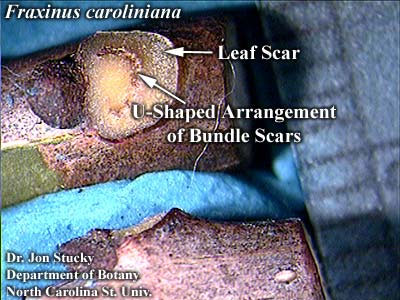
Fraxinus caroliniana (Photo: J.M. Stucky)
Fraxinus caroliniana (Photo: J.M. Stucky)
[NOTE: Leaf scar shape of ashes is frustratingly variable. Perhaps, the best character distinguishing
F. americana from
F. pennsylvanica and
F. caroliniana in natural habitats during the winter is wet vs. dry soils. The author knows of no winter twig or habitat character that distinguishes
F. pennsylvanica from
F. caroliniana.]
























